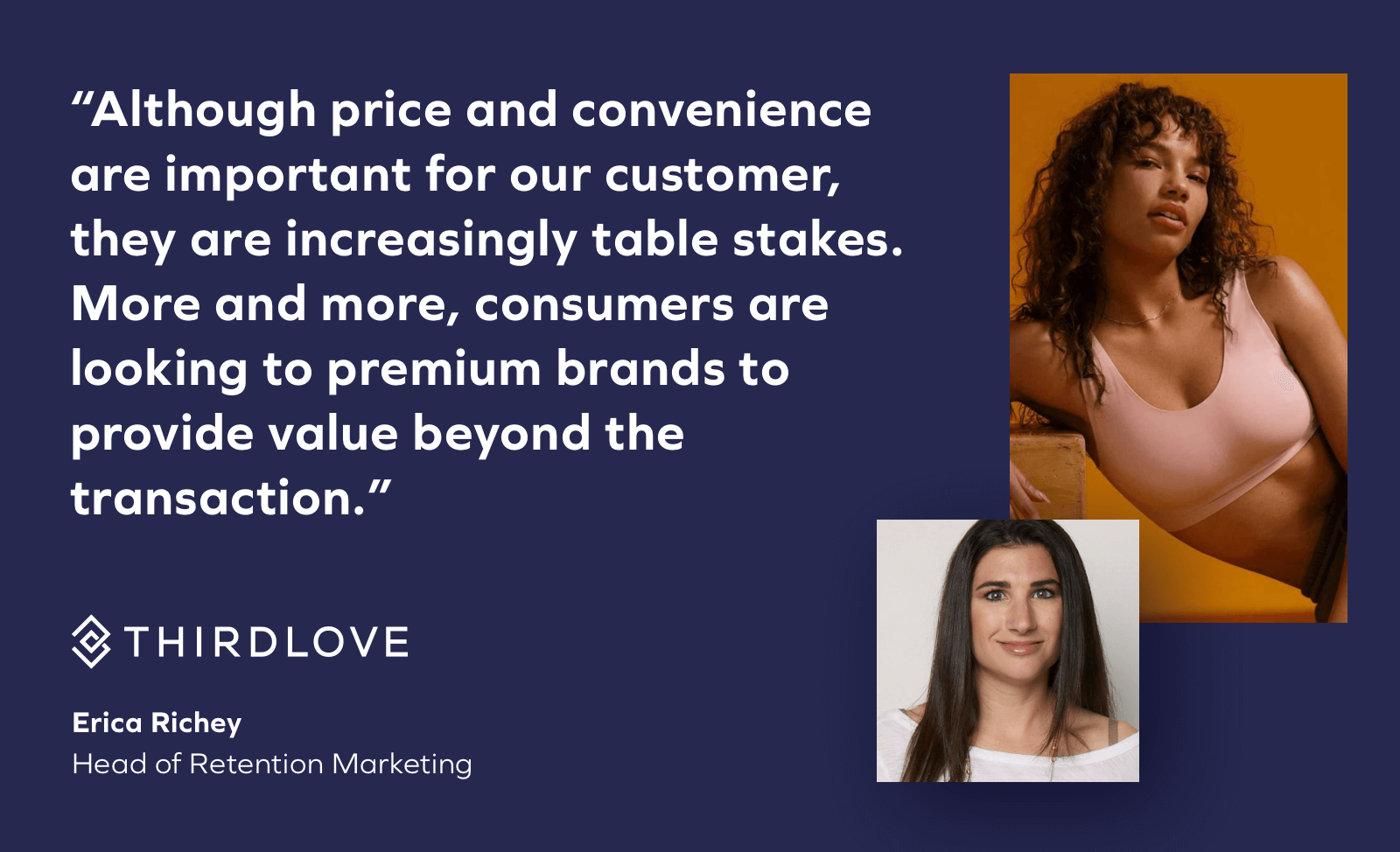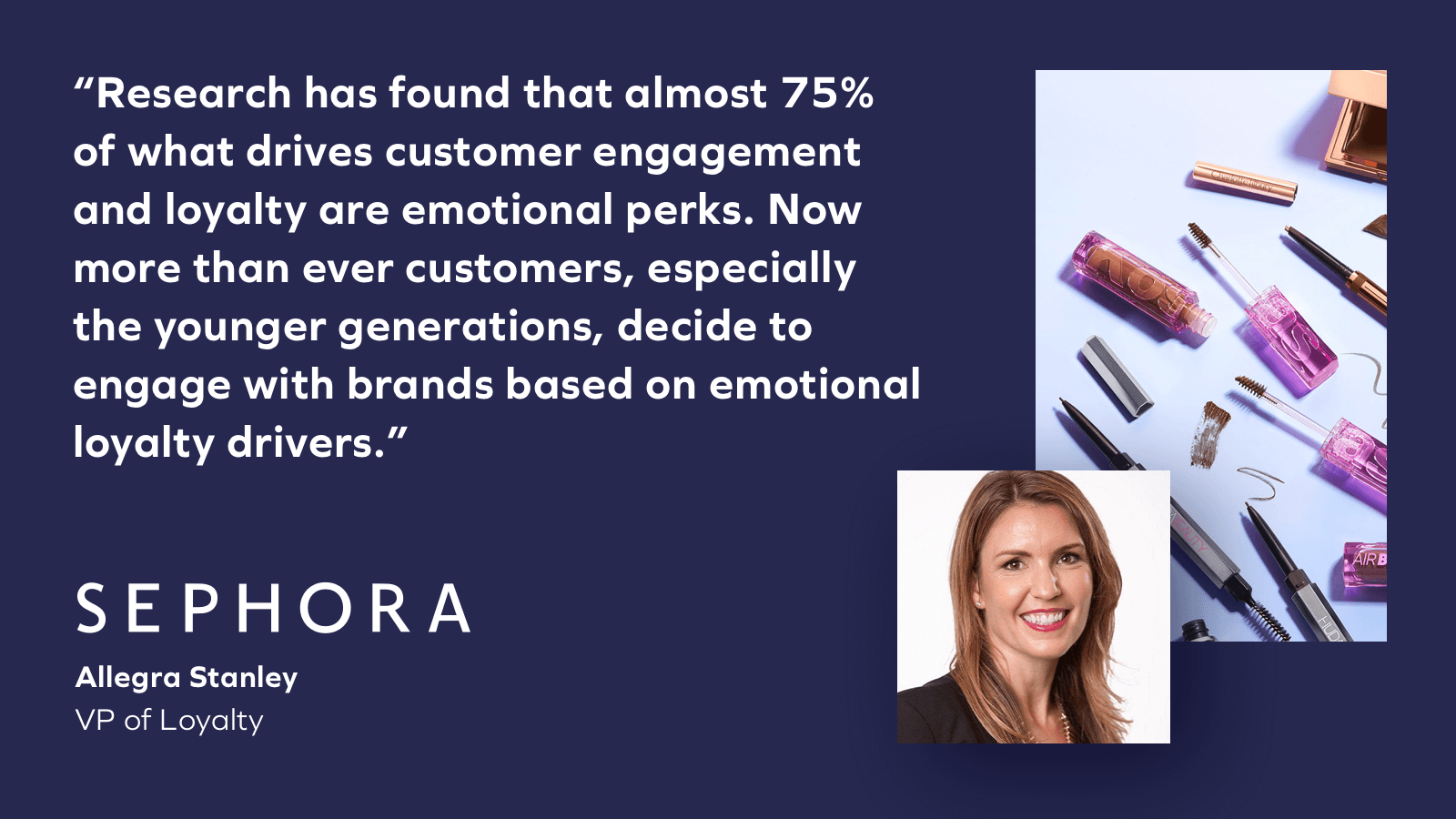Define Business Objectives
Define the business objectives you want to achieve with a loyalty program, from increased share of wallet to deeper emotional connections.
 Buyer's Guide to Enterprise Loyalty
Buyer's Guide to Enterprise Loyalty
Define the business objectives you want to achieve with a loyalty program, from increased share of wallet to deeper emotional connections.
Your information will be treated in accordance with our Privacy Policy
Send this guide to your inbox.
Your information will be treated in accordance with our Privacy Policy
It’s critical to build a program that both achieves business objectives and effectively appeals to customer motivations. Determine reward incentives that will drive engagement & inspire customer activation.
Many brands fail to build a program that works because they either don’t invest them in finding the loyalty formula that fits their brand’s needs, or they fall back on a “set it and forget it” approach that can’t adapt to changing business needs or shifting consumer behaviors.
Design a unique program that aligns with your business goals while effectively and continuously engaging customers with experiences that are meaningful to them, even as their priorities and interests change.
Loyalty programs are made up of similar components, including discounts, points, VIP tiers, and rewards. However, they’re engineered differently based on what goals your business wants to achieve and the value exchange you can provide. Identify and quantify the behavioral changes you require from your customers and the value you can provide in return.

Start by understanding what behaviors actually drive high-value customers. For example, a retailer that sells in multiple categories may realize that customers who are willing to purchase in one product category are also probably willing to shop in three adjacent categories. Knowing this behavior attribute, the business can design program incentives to drive that specific behavior.
By evaluating their engagement analytics, companies can identify specific behaviors that they want to encourage through their loyalty program. By acting on these insights, businesses can drive relevant engagement without giving their strategy away to the consumer.
Define what success with loyalty will look like for your business. Identify which customer cohorts to target and what type of loyalty engagement you’d like to drive from them, like purchasing more profitable products or increasing their cart size with each transaction. Ensure that your strategy and brand messaging work toward meeting your goals.
After conducting the necessary research and determining program type, your business can expect the following outcomes.
Define key milestones to reward customers and introduce incremental habits, like increasing purchase frequency and basket size. Beauty brand Sephora is an excellent case study in upselling via product redemption.
To increase its market share, Sephora leverages free product samples as a loyalty perk. Product samples can be more cost-effective than discounts, and they also encourage shoppers to adopt new product categories. Because customers can try before they buy, new or expensive products become low-risk, which can lead to full product purchases down the line.
Consider leveraging a similar strategy to maximize average order value and continually increase share of wallet with your loyalty program.
Look to use loyalty as a means to educate your customers about your brand values. According to research conducted by Yotpo, over 82% of consumers are more inclined to be loyal to a brand whose values align with their own.
If your business is mission-driven or partners with a foundation, consider incentivizing actions that support those causes, such as rewarding donations with points. For higher-tier VIP members, your business can consider inviting them to function as ambassadors for your brand and mission in return for exclusive experiences.
For enterprise businesses, emotional loyalty should be a key qualitative performance indicator. Your loyalty program should foster a sense of belonging and exclusivity. Consider creating a community specifically for loyalty members to encourage them to be a part of your brand’s story.
Shoppers that feel connected to the program will advocate by referring friends and family to the program, leaving positive reviews, and engaging with the brand on social. Emotional loyalty can become a marketing channel for your business.


